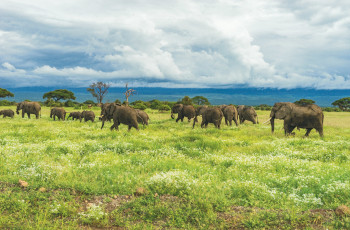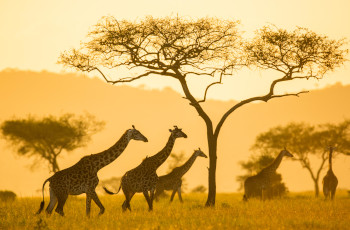Tanzania is one of the countries that forms part of East Africa, it is a diverse country in terms of geography. Tanzania is home to Mount Kilimanjaro, the Serengeti National Park, Zanzibar and the Selous (now Nyerere) National Park, one of Africa’s largest protected areas. While the climate in Tanzania is moderate the rains differ between different areas due to the mountains. The summer months fall between November and March, and the winter months in Tanzania are from April to October. Tanzania has two rainy seasons; October to April – these rains fall over the central, western, and southern areas of the country, then from October to December and March to May – these rains fall over the eastern and coastal areas of the county. The temperatures toward the coast can significantly increase during the summer months, and in the mountains such as Kilimanjaro, the temperatures can drop below freezing during the nights.
Tanzania Average Daily Temperatures & Number of Sunny Days
Tanzania has a moderate climate year-round with certain areas reaching highs of 35° C (95° F) during the summer months. On average summer temperatures range from 10° C to 30° C (50° F to 86° F), and winter temperatures range from 8° C to 22° C (46° F to 72° F). The majority of sunny days in Tanzania fall within the months of June to November making this an ideal time for a safari.
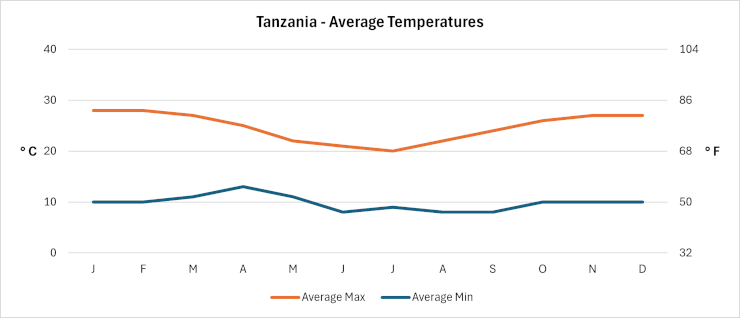
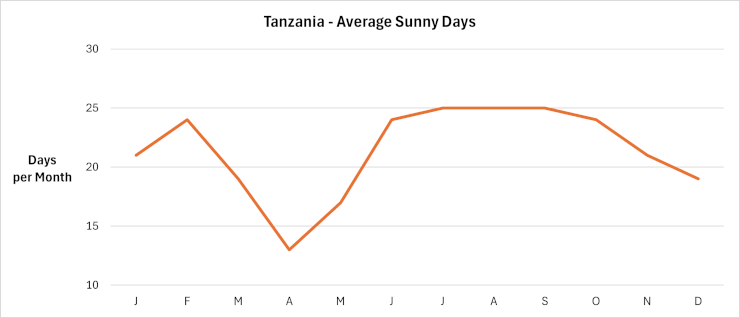
Tanzania Average Monthly Rainfall
With the diverse landscape of Tanzania, the rains fall in different areas at different times of the year. Average rainfall in the country reaches around 1000mm (39in) per year, during years of good rain this can increase dramatically. Majority of the rain in Tanzania falls during the months of April and May, making the rest of the year more suitable for good game-viewing safaris.
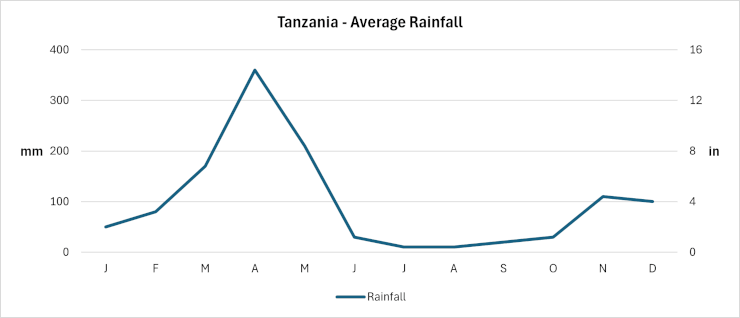
National Parks and the best times to visit
With mountain regions in the north to the plateau in the centre of the country to the beautiful coastal landscapes of the surrounding islands, coupled with pleasant temperatures year-round, Tanzania is the ideal safari and beach destination.
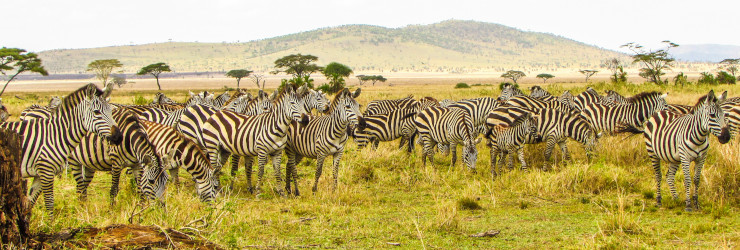
The Serengeti National Park – located in the north of Tanzania, bordering the Masai Mara Reserve in Kenya, this park is where the annual great migration generally begins. To witness the beginning of the migration the best time to visit the Serengeti is at the end of the wet season, from April/May onwards. The dry season is perfect for wildlife sightings and the daytime temperatures are quite pleasant. The wet season brings its own beauty to the Serengeti, with flood plains and lush green savannahs.
Mount Kilimanjaro – located in the north close to the Kenyan border you will find Mount Kilimanjaro, the tallest mountain in Africa. The best times to visit and/or climb Mount Kilimanjaro are during the dry months – December to March, and June to October. The temperatures vary significantly from the base of the mountain to the peak, average daytime temperatures at the base are 25° C (77° F) and the average daytime temperatures toward the mountain’s summit are -7° C (19° F).
Other parks in Tanzania include the Ngorongoro Conservation Area, the Tarangire National Park, the Selous Game Reserve and the Ruaha National Park. All of these parks are year-round destinations and provide excellent game viewing. Each season has its own perks, in the summer months the landscapes are breath-taking filled with shades of green and the birdlife is wonderful, during the winter months the landscapes become dry and wildlife concentrates at the rivers and waterholes making wildlife sightings such as spotting the Big 5 that much easier.
